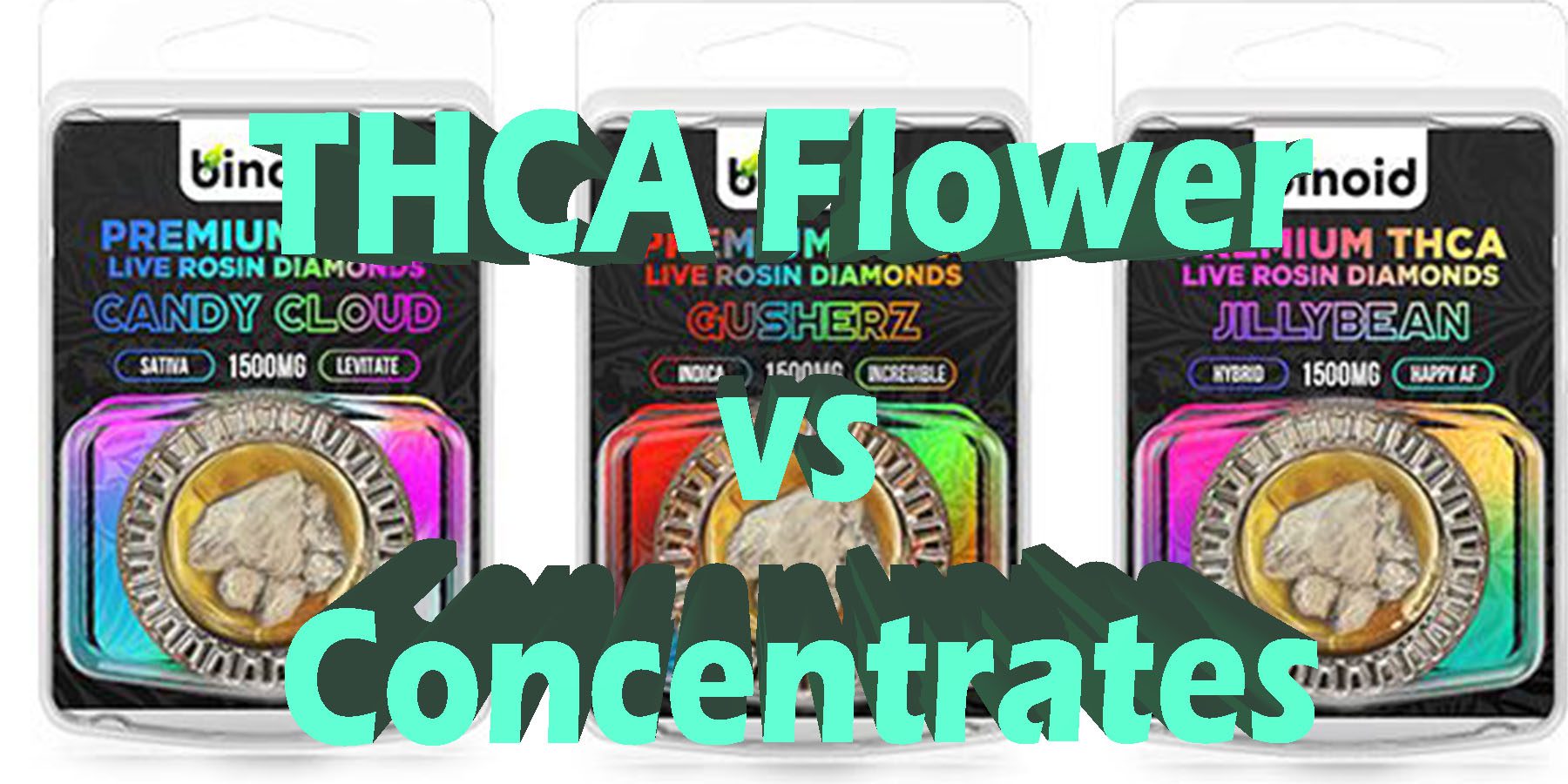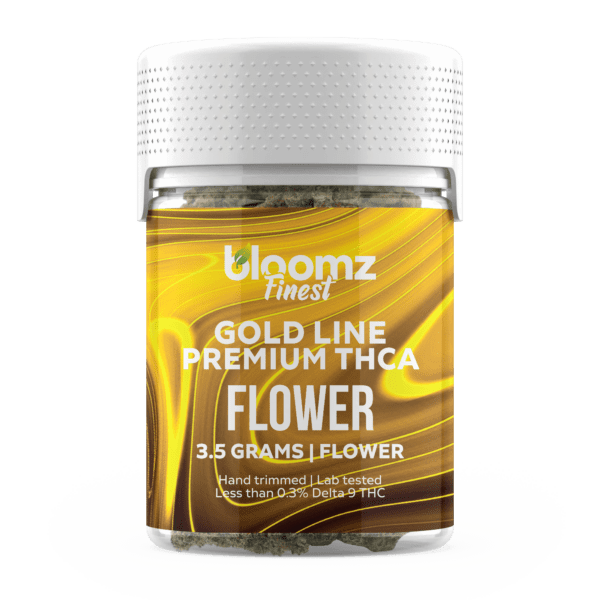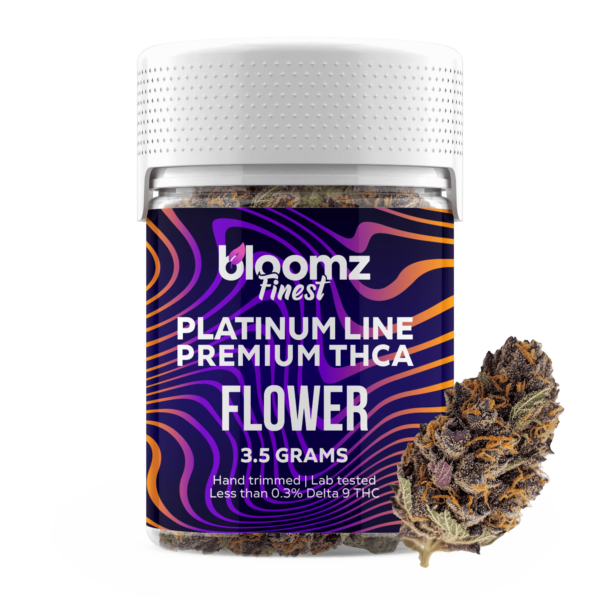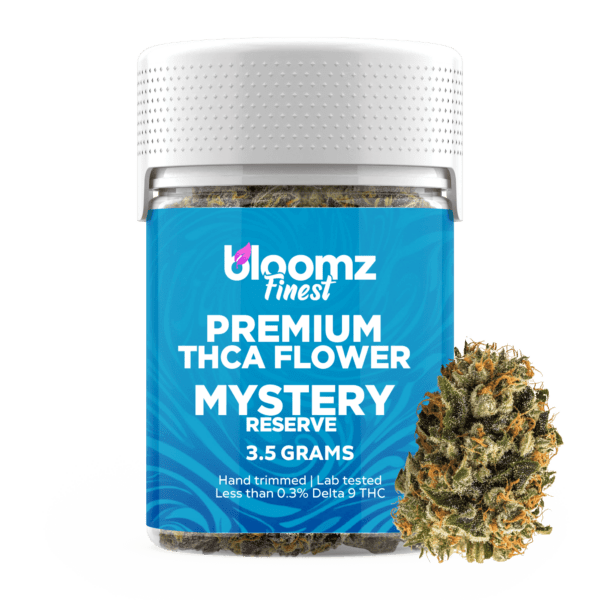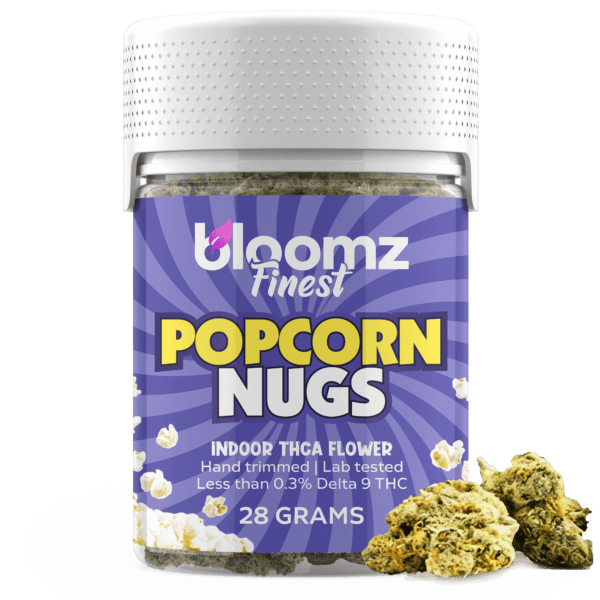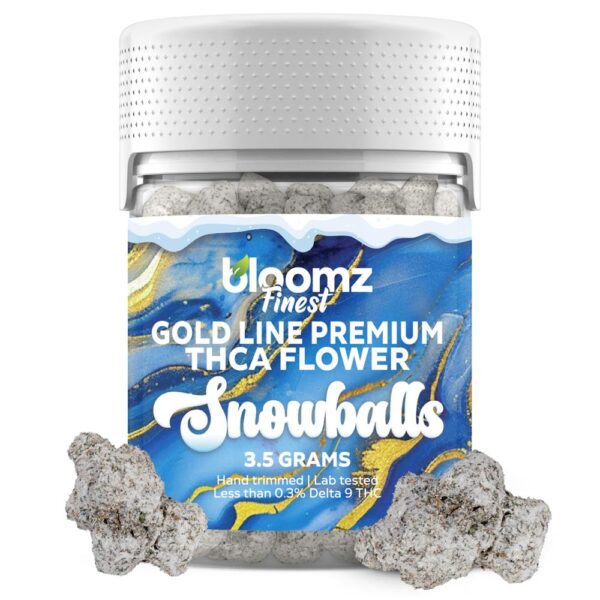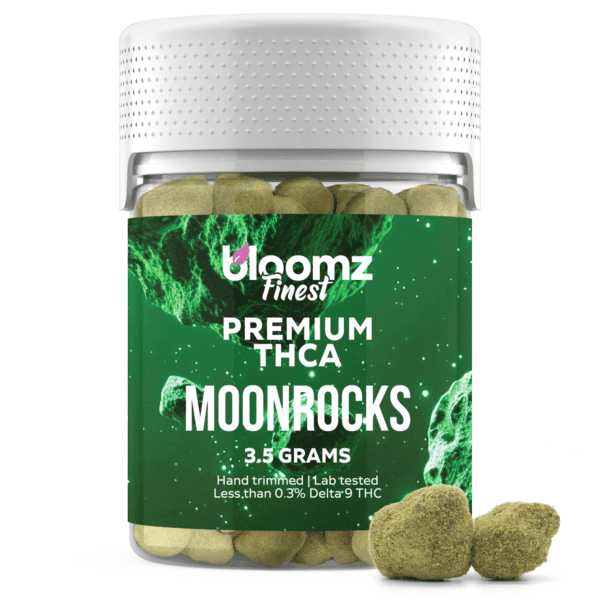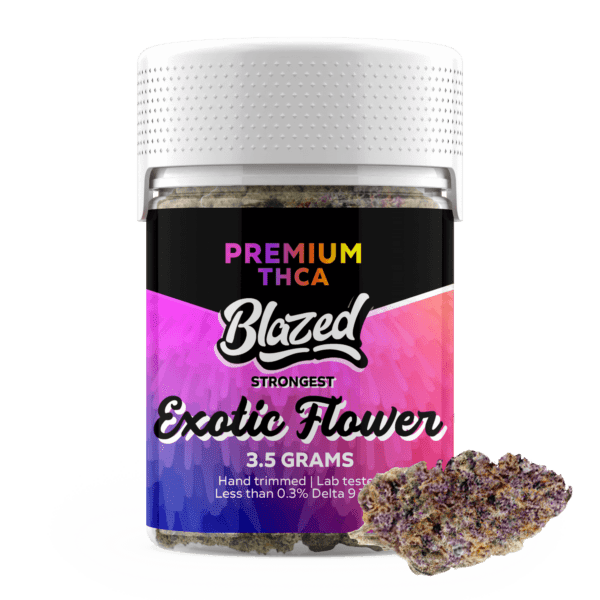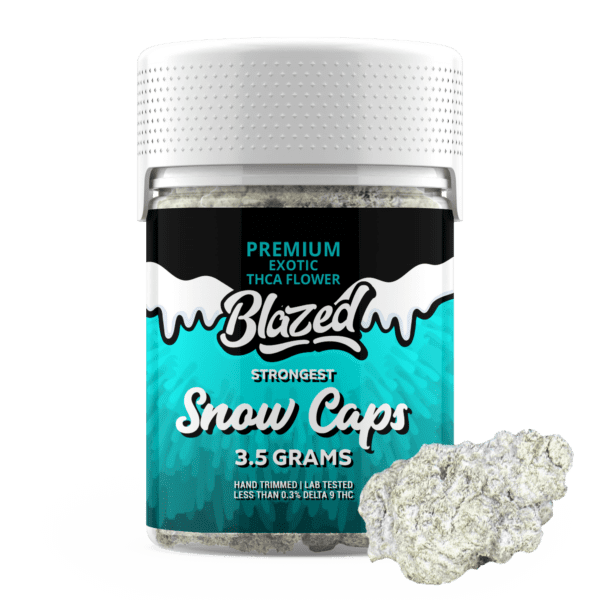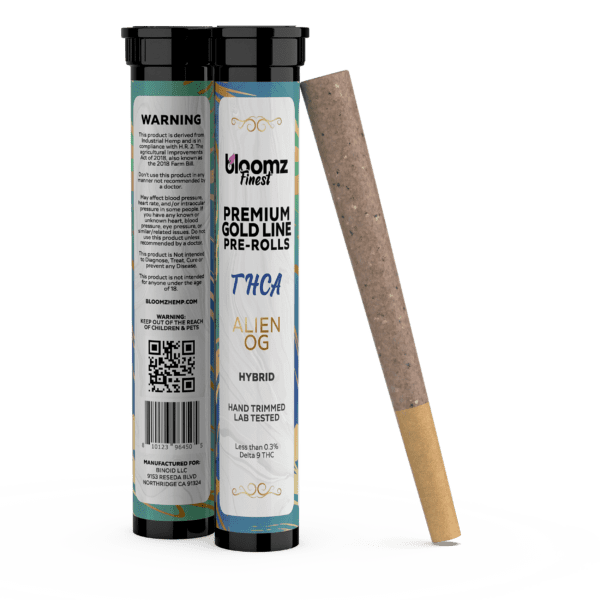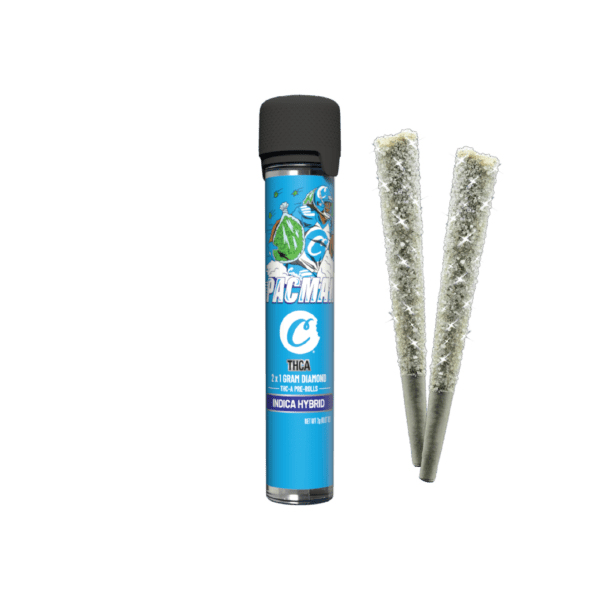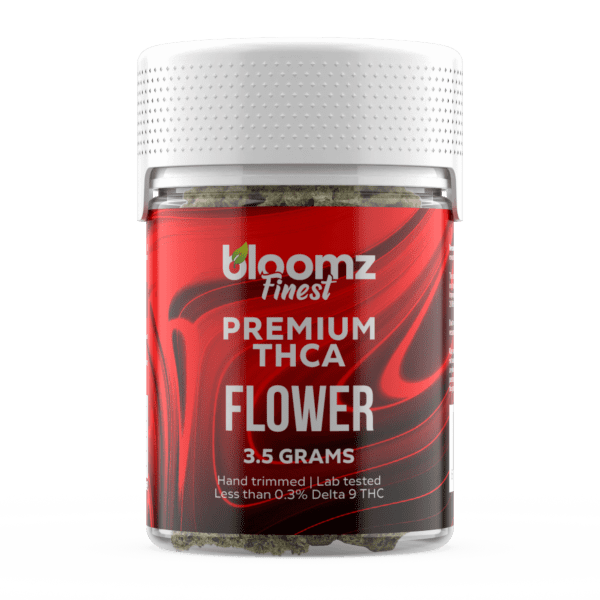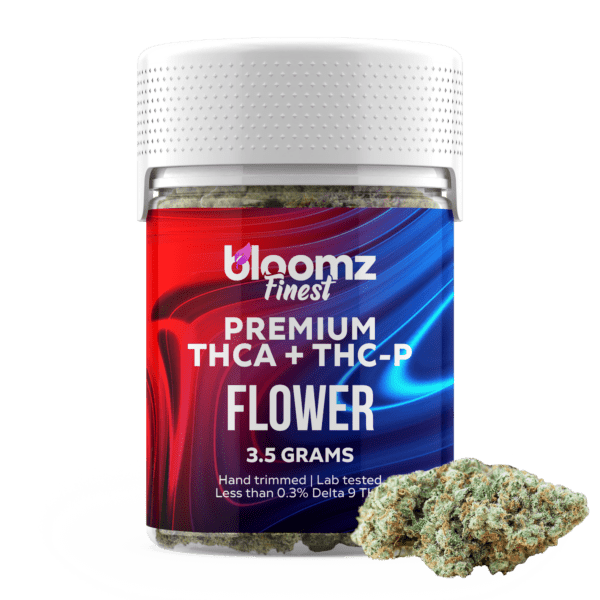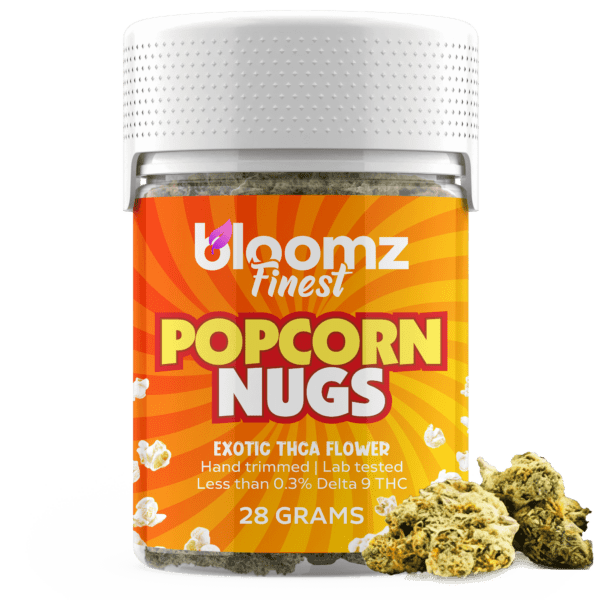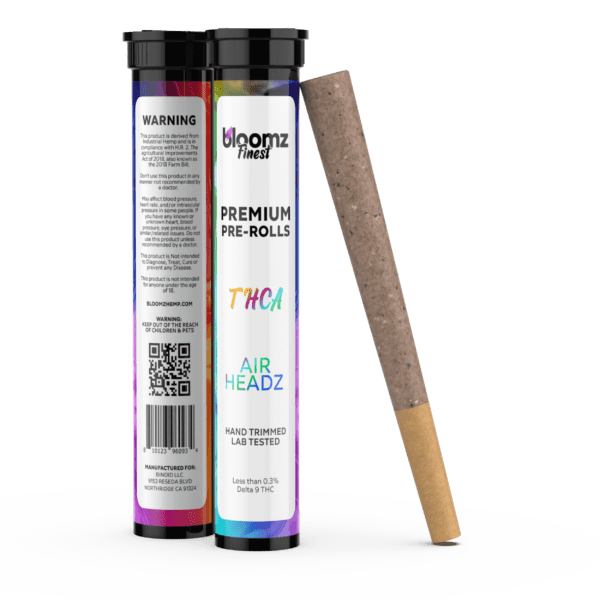In the vibrant and ever-expanding universe of hemp-derived products, a fundamental choice confronts both the curious newcomer and the seasoned connoisseur: to embrace the plant in its time-honored, natural form, or to explore its very essence, refined and amplified through modern science. This decision charts a course between two distinct philosophies of consumption, each with its own unique rituals, sensations, and profound character.
On one side of this great divide stands the venerable THCA flower, a fragrant, crystalline masterpiece of horticultural art that offers a direct and multi-sensory connection to the earth from which it grew. On the other side lies the dazzling world of concentrates, a testament to the power of extraction and purification, presenting the plant’s most potent compounds in a variety of powerful and pristine forms. Navigating this choice is not merely about selecting a product; it is about defining an experience and aligning it with one’s own personal preferences for flavor, potency, and process.
To Buy THCA Flower Click Here
Recommended products
-
THCA Flower – Indoor Exotics – Gold Line
$37.99$69.99 -
THCA Flower – Platinum Line
$49.99$79.99 -
THCA Flower – Mystery Reserve
$41.99$79.99 -
THCA Smalls
$149.99$256.99
Why It’s Important to Breakdown the Matchup of THCA Flower vs. Concentrates
A detailed and thorough breakdown of the matchup between traditional THCA flower and the diverse world of concentrates is not just helpful; it is essential for empowering consumers to make a truly informed decision that resonates with their lifestyle and desired outcomes. The differences between these two categories are vast and fundamental, extending far beyond simple potency to encompass the entire user experience, from the necessary equipment and preparation to the very nature of the effects themselves.
Understanding these distinctions—the holistic, nuanced entourage effect of THCA flower versus the powerful, direct, and targeted impact of a concentrate, the familiar ritual of smoking versus the modern precision of dabbing—allows an individual to tailor their journey with intention. This exploration is not about establishing a universal hierarchy of quality, but rather about illuminating the unique virtues and specific considerations of each path, ensuring every person can confidently select the form that best suits their needs.
This in-depth comparison is critical for several key reasons. Firstly, it addresses the significant difference in potency and the user’s tolerance. Concentrates can be three to four times more potent than even the strongest flower, a fact that is crucial for beginners to understand to ensure a comfortable experience. Secondly, the conversation must cover the vast disparity in required hardware and the associated learning curve.
Consuming THCA flower can be as simple as using a basic pipe, while properly consuming concentrates often requires specialized and sometimes intimidating equipment like a dab rig and torch. Furthermore, the economic considerations are vastly different; while concentrates are more expensive per gram, their high efficiency means a small amount goes a very long way. By carefully dissecting these factors, along with nuances in flavor, onset time, and duration of effects, we provide a complete and transparent picture, transforming a potentially overwhelming choice into a clear and calculated personal decision.
Contender #1: THCA Flower
In the ever-expanding universe of hemp-derived products, THCA flower stands as the venerable patriarch, the foundational source from which so many other innovations spring. It represents a return to the roots of the plant, offering an experience that is deeply connected to the earth and the art of cultivation. This is the classic form, celebrated for its complex aromas, rich flavors, and the visual beauty of its crystalline-dusted buds.
For many connoisseurs, THCA flower is not just a product but an experience in itself—a tactile and aromatic journey that begins the moment you open the jar. It engages all the senses, from the sticky texture of the trichomes to the crackle of the ignited herb, providing a full-bodied ritual that modern alternatives often seek to replicate but can rarely duplicate. It is the benchmark against which all other forms are measured, a testament to the enduring appeal of the natural, unprocessed plant in all its glory.
At the heart of this classic contender lies a fascinating cannabinoid known as tetrahydrocannabinolic acid (THCA) – in its raw, unheated state within the cannabis and hemp plants, THCA is a non-intoxicating acidic precursor to the most famous cannabinoid of all, Delta 9 THC. Imagine it as the dormant form, patiently waiting for the right conditions to transform. This is why consuming raw, freshly harvested hemp flower will not produce the euphoric effects commonly associated with THC.
The molecular structure of THCA includes an extra carboxyl group (a chain of carbon, oxygen, and hydrogen atoms) that prevents it from binding effectively with the CB1 receptors in the brain, the primary neurological sites responsible for producing intoxicating effects. It exists in abundance on the trichomes—the tiny, glistening, crystal-like glands that cover the surface of the buds and leaves of the plant.
The magical transformation from non-intoxicating THCA to psychoactive Delta 9 THC occurs through a process called decarboxylation. This is a scientific term for a very simple action: applying heat. When you light a pre-roll, heat the chamber of a dry herb vaporizer, or bake the flower in an oven to make edibles, you are causing that extra carboxyl group on the THCA molecule to break off and release as carbon dioxide (CO2). Once this happens, the molecule is converted into Delta 9 THC, now perfectly shaped to bind with those CB1 receptors and deliver its well-known effects.
This crucial, heat-activated conversion is the entire basis for why THCA flower has become so popular. It allows for a product that is legally compliant in its raw form under federal law, yet capable of providing a potent and authentic experience when consumed in the traditional manner. Understanding this simple yet profound chemical reaction is the key to appreciating the unique position THCA flower holds in the market.
So then, THCA flower is, quite simply, premium hemp flower that has been selectively bred and cultivated to produce exceptionally high levels of tetrahydrocannabinolic acid while keeping the concentration of Delta 9 THC below the legal federal limit of 0.3% by dry weight. Visually, aromatically, and texturally, it is virtually indistinguishable from traditional high-THC cannabis flower found in state-licensed dispensaries. It is the result of meticulous genetic selection and advanced agricultural techniques aimed at maximizing the plant’s natural production of the THCA cannabinoid.
This allows consumers in many regions to legally purchase a product that offers an experience identical to that of traditional cannabis, as the simple act of applying heat (smoking or vaping) converts the abundant THCA into Delta 9 THC. The production of high-quality, compliant THCA flower is a multi-stage process that requires precision, patience, and scientific oversight.
The production of this premium, legally compliant flower is a sophisticated agricultural endeavor, a multi-stage process where every detail is paramount to the final quality:
Genetic Selection and Breeding: The process begins with expert breeders selecting specific hemp cultivars known for their genetic predisposition to produce high concentrations of THCA. Through careful cross-breeding and stabilization over multiple generations, they create unique strains that consistently yield potent flowers while naturally maintaining Delta 9 THC levels well below the legal threshold. This foundational step is critical for ensuring both the quality and compliance of the final product.
Meticulous Cultivation: Once the right genetics are secured, the seeds or clones are cultivated in highly controlled environments. Indoor cultivation is often preferred as it allows growers to manage every variable—light cycles, temperature, humidity, nutrient delivery, and airflow—with scientific precision. This level of control protects the plants from pests and contaminants and encourages the maximum development of cannabinoids and terpenes, which are responsible for the flower’s potency, aroma, and flavor.
Strategic Harvesting: Timing the harvest is an art form in itself. Growers closely monitor the plant’s trichomes, the microscopic resin glands that produce cannabinoids. Using magnifying tools, they watch for the trichomes to transition from clear to a milky white or amber color. Harvesting at the peak of this cycle ensures that the THCA content is at its absolute highest and that the terpenes are fully developed, locking in the strain’s signature profile.
Slow Drying and Curing: After harvesting, the flower is hung to dry in a dark, climate-controlled room with specific temperature and humidity levels. This slow drying process, which can take one to two weeks, is crucial for preserving the delicate terpenes and preventing the growth of mold or mildew. Following the initial dry, the buds are trimmed and placed in airtight containers for the curing phase. Curing can last for several weeks to months, a process where the buds are periodically “burped” to release moisture and gases. This patient process significantly enhances the smoothness, flavor, and aroma of the final product.
Comprehensive Laboratory Testing: The final and most crucial step for legal compliance is third-party lab testing. A sample from each batch is sent to an independent laboratory to be analyzed. The lab provides a Certificate of Analysis (COA) that verifies the precise cannabinoid profile, confirming that the Delta 9 THC concentration is at or below the 0.3% federal limit. This COA also tests for pesticides, heavy metals, and other contaminants, ensuring the product is clean, safe, and legal for sale.
The world of THCA flower is not a monolith though; it’s a rich and diverse ecosystem with various categories and types, each offering a unique set of characteristics to suit different preferences and budgets. This variety stems from differences in cultivation methods, bud size, and special enhancement techniques. Understanding these distinctions allows consumers to fine-tune their selection, whether they are seeking the absolute pinnacle of artisanal quality, a cost-effective option for regular use, or an exceptionally potent, enhanced experience. From the meticulously controlled environment of an indoor grow to the sun-kissed fields of an outdoor farm, each type tells a different story and delivers a distinct product:
Indoor THCA Flower: This category represents the gold standard in cultivation. Grown in completely controlled indoor environments, these plants receive perfect lighting, climate, and nutrient regimens. This meticulous care results in highly potent, visually stunning buds that are dense, perfectly trimmed, and coated in a thick layer of frosty trichomes. The terpene profiles are often more pronounced and complex, leading to exceptionally rich aromas and flavors. Indoor flower is the top-shelf choice for connoisseurs who prioritize aesthetic perfection and maximum potency.
Outdoor THCA Flower: Cultivated under the natural sun and in open air, outdoor THCA flower offers a more rustic and traditional character. While it may not always have the pristine, manicured appearance of its indoor counterpart, it can develop robust and unique terpene profiles influenced by the natural soil and environment (the terroir). Outdoor buds are often larger and can be a more cost-effective option, making them a great choice for those who appreciate a more natural product and consume larger quantities.
THCA Smalls: As the name suggests, “smalls” are smaller-sized buds from the same high-quality plants that produce larger nugs. These buds are typically found lower on the plant where they receive less direct light, resulting in a more petite size. Despite their smaller stature, they pack the same potency and terpene profile as their larger siblings. Smalls are an excellent value proposition, offering the quality of premium indoor or outdoor flower at a more accessible price point, making them perfect for grinding up for pre-rolls or vaporizers.
THCA Nugs: This is the standard form of flower, referring to the full-sized, trimmed buds, or “nugs” (nuggets). These are the main colas and larger formations from the plant, boasting the classic appearance that most consumers associate with premium flower. They offer the full visual and tactileexperience, showcasing the strain’s unique structure, color, and trichome coverage. Nugs are ideal for those who appreciate the ritual of breaking down the flower by hand and admiring its quality before consumption.
THCA Snowballs/Snow Caps: This is an enhanced type of THCA flower created for maximum potency. The process involves taking a premium THCA nug and coating it in pure THCA isolate, which is a fine, white, crystalline powder that is nearly 100% pure THCA. This outer layer gives the bud a “snow-covered” appearance, hence the names “Snowball” or “Snow Cap.” The result is an incredibly potent product that significantly elevates the THCA concentration far beyond what is naturally possible in the plant alone.
THCA Moonrocks: Taking enhancement a step further, THCA Moonrocks are the titans of potency in the flower world. Creating them is a three-step process: first, a high-quality THCA nug is selected. Second, it is coated in a sticky layer of heated cannabinoid distillate (often a high-THCA or Delta 8 THC concentrate). Third, while still sticky, the oil-covered nug is rolled in a generous amount of kief, which is the collected resinous trichomes that have been sifted from the flower. This trifecta of flower, distillate, and kief creates a dense, multi-layered product with an astronomical potency level.
THCA Pre-Rolls, Blunts & Joints: For those who value convenience above all else, pre-rolled options are the perfect solution. THCA Pre-Rolls are simply ground THCA flower expertly packed into rolling papers (joints) or hemp wraps (blunts) by a machine or by hand. This eliminates the need for the user to own a grinder, papers, or possess the skill of rolling. They offer a ready-to-use, portable, andshareable format that provides a classic smoking experience without any of the preparation.
Exotic THCA Flower: The term “Exotic” refers to rare and unique strains that are not commonly found. These are often boutique, small-batch cultivars with highly sought-after genetics that result in unusual colorations (like deep purples and vibrant oranges), incredibly complex and novel aroma/flavor profiles (such as candy, dessert, or tropical fruit notes), and exceptionally high potency. Exotic strains are for the adventurous user looking to experience the cutting edge of cannabis breeding.
AA, AAA, and AAAA Exotic THCA Flower: This grading system, originating from the legacy market, is sometimes used by vendors to classify the quality of their flower, particularly exotic strains. While not standardized across the industry, it generally signifies ascending levels of quality. AA (Double A) is often considered mid-grade—good quality but may have minor imperfections in trim, density, or aroma. AAA (Triple A) is the standard for high-quality, top-shelf flower, representing most of the excellent products on the market with great bag appeal, strong aroma, and potent effects. AAAA (Quad A), or “Quads,” is reserved for the absolute best of the best—the pinnacle of cannabis cultivation. This flower is virtually flawless in every aspect: perfect bud structure, an overwhelming and complex aroma, a thick and sticky coating of trichomes, and exceptionally high cannabinoid and terpene content.
Recommended products
The identity of any given THCA flower is defined by its strain, a specific variety of the plant bred to produce a unique combination of cannabinoids, terpenes, and flavonoids. These compounds work together in synergy to create the strain’s signature effects, aroma, and flavor profile. The vast world of hemp genetics is generally categorized into three primary classifications: Indica, Sativa, and Hybrid. These labels provide a foundational roadmap for consumers, offering a general forecast of the experience a particular strain is likely to provide. While the science has evolved to show that the terpene profile is a more accurate predictor of effects than the Indica/Sativa classification alone, these categories remain an invaluable and widely understood tool for navigating the diverse offerings and helping users align their choice with their desired outcome:
Indica: Traditionally associated with plants that are shorter, bushier, and have broad leaves, Indica strains are renowned for delivering profoundly relaxing and calming effects on the body. They are often the go-to choice for evening use or for moments when the primary goal is to unwind, decompress, and sink into a state of serene tranquility. The terpene profiles of classic Indica strains are frequently dominated by myrcene, which is known for its earthy, musky, and slightly fruity notes and is often linked to sedative-like qualities. Other common terpenes include linalool, with its floral and lavender-like scent, and caryophyllene, which provides a spicy, peppery kick. Popular examples of famous Indica genetics you might find in THCA flower include strains like Granddaddy Purple, Northern Lights, and Bubba Kush, all celebrated for their ability to promote a chilled-out and blissful state.
Sativa: In contrast, Sativa strains typically originate from taller, lankier plants with narrow leaves and are best known for producing uplifting, energizing, and cerebrally-focused effects. These are the strains often chosen for daytime activities, creative projects, social gatherings, or any situation where a boost of mental clarity and euphoric energy is desired. Sativas tend to be rich in terpenes like limonene, which offers a bright, zesty citrus aroma, and pinene, which contributes a fresh, sharp scent of pine. These aromatic compounds are often associated with mood elevation and alertness. Well-known Sativa-dominant strains that have been bred into the THCA market include classics like Sour Diesel, Jack Herer, and Green Crack, all famous for their invigorating and thought-provoking experiences that can spark creativity and conversation.
Hybrid: Occupying the vast middle ground between the two poles of Indica and Sativa, Hybrid strains are created by cross-breeding plants from both lineages. The goal of creating a hybrid is to capture the most desirable traits from each parent strain, resulting in a balanced and multifaceted experience. Hybrids can be either Indica-dominant, Sativa-dominant, or a true 50/50 balance. An Indica-dominant hybrid might offer gentle physical relaxation without being overly sedating, while a Sativa-dominant hybrid could provide a euphoric mental uplift without the raciness some pure Sativas can induce. This category offers immense variety and allows for highly nuanced effects, making hybrids the most popular and diverse category on the market. Strains like Blue Dream, GSC (formerly Girl Scout Cookies), and OG Kush are legendary hybrids that showcase this perfect blending of effects, offering a versatile experience that can be enjoyed at almost any time of day.
Now, THCA flower’s legal status here in the USA is a fascinating and somewhat complex topic that hinges on specific chemical definitions established by federal law. The cornerstone of its legality is the 2018 Agriculture Improvement Act, more commonly known as the 2018 Farm Bill. This landmark piece of legislation federally legalized the cultivation and sale of hemp, which it defined as the cannabis sativa L. plant containing a Delta 9 THC concentration of not more than 0.3 percent on a dry weight basis. The key to THCA flower’s compliance lies in that precise wording. Because THCA is a distinct cannabinoid from Delta 9 THC, a flower can contain a very high concentration of THCA—say, 20% or more—and still be classified as legal hemp, as long as its Delta 9 THC level remains at or below the 0.3% threshold.
This legal distinction creates what some call a “loophole,” though it is more accurately a direct consequence of the bill’s scientific definition of hemp. The law focuses exclusively on the concentration of Delta 9 THC at the time of testing, not what the flower could become after being heated. This allows producers to cultivate, harvest, and sell THCA-rich flower across many states.
However, the legal landscape is not uniform across the country. Some states have passed their own laws that adopt a “total THC” standard. This standard calculates the potential Delta 9 THC content by adding the existing Delta 9 THC to the amount of THCA that could be converted (using a specific formula: Total THC = %Δ9THC + (%THCA × 0.877)). In states with total THC laws, high-THCA flower is considered illegal. Therefore, while THCA flower is federally compliant under the Farm Bill, its legality can vary significantly at the state level, making it crucial for consumers to be aware of their local regulations.
The versatility of THCA flower is one of its most celebrated attributes, allowing users to tailor their consumption method to fit their specific needs, preferences, and available equipment. Unlike some single-use products, raw flower serves as a universal starting point for a wide range of experiences, each offering a distinct onset time, duration, and overall character. This flexibility empowers the user to be the master of their own session, whether they prefer the immediate and flavorful clouds of a vaporizer, the timeless ritual of smoking, or the long-lasting, profound effects of a homemade edible.
Each method utilizes the principle of decarboxylation to unlock the flower’s potential, but the path it takes to get there profoundly shapes the final journey:
Vaping (using a portable or desktop vaporizer): Vaporizing, or “vaping,” is a modern method that involves heating the THCA flower in a device called a dry herb vaporizer to a temperature that is hot enough to decarboxylate the THCA into THC and vaporize the cannabinoids and terpenes, but not hot enough to cause combustion. This process creates a smooth, flavorful vapor to be inhaled instead of harsh smoke. Many connoisseurs consider this the superior method for experiencing the full, nuanced flavor profile of a strain, as the lower temperatures preserve the delicate terpenes that are often destroyed by the high heat of a flame. Vaping is also considered more efficient, as it extracts the active compounds more completely, and it produces a much less potent and lingering odor compared to smoking.
Smoking: This is the most traditional and widely recognized method of consuming flower. It involves igniting the ground-up buds in various apparatuses, such as a pipe, a water pipe (bong), or rolled into a joint or blunt. The act of combustion instantly decarboxylates the THCA, delivering the resulting THC and other compounds to the lungs for rapid absorption into the bloodstream. This method is cherished for its ritualistic nature, simplicity, and the immediate onset of its effects. While it may not preserve the subtle notes of the terpene profile as well as vaping, the robust and familiar experience of smoking remains a deeply ingrained and beloved practice for millions of users.
Cooking/Baking: For those who prefer to avoid inhalation altogether, THCA flower can be used to create potent and long-lasting edibles. This method requires a preliminary step of decarboxylation in an oven. The flower is coarsely ground and baked at a low temperature (around 220-240°F or 105-115°C) for 30-40 minutes. This controlled heating converts the THCA into Delta 9 THC, “activating” the flower. Once decarboxylated, the flower can be infused into a fat-based carrier like butter or coconut oil. This infused “cannabutter” or “canna-oil” can then be used as a base for baking or cooking a wide variety of recipes, from brownies and cookies to savory dishes. Edibles provide a much different experience: the onset is delayed (typically 45 minutes to 2 hours), but the effects are significantly stronger and can last for many hours.
The experience delivered by THCA flower is a rich tapestry woven from its complex chemical profile, culminating in a full-bodied and nuanced effect once decarboxylated. When heated, the converted Delta 9 THC becomes the primary driver of the experience, producing feelings of euphoria, uplift, and a pleasant shift in perception. However, the effects are not solely dictated by this single cannabinoid. THCA flower contains a whole symphony of other compounds, including minor cannabinoids like CBG and CBC, and a vast array of aromatic terpenes. This complete chemical matrix gives rise to what is known as the “entourage effect,” a theory suggesting that all these compounds work in synergy to modulate and enhance one another’s properties, creating an effect that is greater than the sum of its parts.
This synergy is what makes each strain unique. A strain high in the terpene myrcene might produce a deeply relaxing and tranquil experience, perfect for unwinding at the end of the day. In contrast, a strain rich in limonene and pinene could inspire a wave of creative energy and focus, making it more suitable for daytime activities. The sensory experience is also a huge part of its effects; the pungent, delightful aroma released upon opening a jar and the rich, complex flavors perceived when smoking or vaping contribute significantly to the overall ritual and enjoyment. The onset of effects from inhalation is rapid, typically felt within minutes, allowing for easy titration and control over the intensity of the experience. The result is a holistic journey that engages the senses and offers a spectrum of potential feelings, from gentle, blissful calm to soaring, energetic bliss.
Pros & Cons
Like any product, THCA flower is accompanied by its own distinct set of compelling advantages and practical disadvantages. A thorough and honest evaluation of these pros and cons is a vital step for any consumer who is trying to determine if this classic, natural form of the hemp plant is the right fit for their specific lifestyle, environment, and personal preferences. The undeniable appeal of its authenticity, versatility, and rich sensory experience must be carefully weighed against practical considerations such as its noticeable odor, the need for accessories, and its overall lack of discretion.
Pros:
Authentic, Full-Spectrum Experience: A primary advantage of THCA flower is its delivery of the plant’s complete and unadulterated chemical profile. This includes a vast spectrum of cannabinoids, a complex array of aromatic terpenes, and various flavonoids, all working in concert to produce the synergistic entourage effect. This results in a more nuanced, multi-layered, and holistic experience that many users find to be more satisfying and well-rounded than products made from isolated cannabinoid extracts.
Deep Sensory Engagement: The journey with THCA flower is a true feast for the senses that begins long before the moment of consumption. The visual allure of a perfectly cured, trichome-laden bud, the potent and unique aroma that blossoms upon grinding it, and the rich tapestry of flavors perceived upon inhalation are all fundamental parts of the ritual. This profound sensory engagement fosters a deeper connection to the plant and a level of enjoyment that is difficult to replicate with other formats.
Unmatched Versatility in Consumption: THCA flower is exceptionally versatile, serving as the foundational ingredient for a multitude of consumption methods. Users retain the freedom to choose whether they wish to smoke it in a traditional joint for a classic experience, vaporize it for a cleaner and more flavor-forward session, or even decarboxylate it in their own kitchen to create custom homemade edibles. This adaptability allows one to tailor their experience to their mood, setting, or available tools at any given time.
Immediate Feedback and Effect Onset (Inhalation): When THCA flower is either smoked or vaporized, the onset of its effects is felt almost instantaneously, typically within a few short minutes of inhalation. This rapid feedback loop provides for immediate gratification and allows for incredibly precise control over the intensity of the experience. Users can easily self-regulate their intake, taking small inhalations and waiting to gauge the effects before deciding to consume more, which is a significant factor in preventing overconsumption.
Greater Control Over the Entire Process: From the act of selecting a specific nug to grinding it to a desired consistency and packing a bowl or rolling a joint, using flower provides a hands-on and fully customizable process. The user controls every single aspect of the preparation and consumption. This ritualistic element is highly prized by many enthusiasts who find it to be a grounding, mindful, and enjoyable part of their routine.
Transparency Through Visual Inspection: With whole THCA flower, what you see is precisely what you get. Consumers have the ability to visually inspect the quality of the product before they purchase or use it, looking for positive indicators like trichome density, vibrant colors, proper bud structure, and a tight trim. You can also use your sense of smell to gauge its freshness and terpene profile. This inherent transparency provides a level of confidence and assurance not always possible with opaque oils in a sealed device.
Superior Cost-Effectiveness in Bulk: While the initial price of a premium eighth of an ounce might be comparable to a disposable vape, flower almost always becomes the more economical choice when purchased in larger quantities. Buying a quarter, half, or full ounce can dramatically reduce the price per gram, making it a far more budget-friendly option for regular and heavy consumers alike.
Vast and Diverse Strain Availability: The market for THCA flower boasts an enormous and constantly expanding library of unique genetic strains. This incredible biodiversity means there is a strain available to suit virtually any preference for flavor, aroma, and desired effect. Whether one is searching for a deeply relaxing Indica, a vibrantly energetic Sativa, or a perfectly balanced Hybrid, the sheer variety available in flower form is unparalleled.
Natural and Unprocessed Form: For purists and health-conscious consumers, a major part of flower’s appeal lies in its natural, unprocessed state. It is simply the dried and cured bud of the hemp plant, with no solvents, cutting agents, additives, or complex chemical extraction processes involved. This “farm-to-table” characteristic strongly resonates with those who prioritize natural products and want to consume the plant as close to its earthly form as possible.
Deeper Connection to Cultivation: Using whole THCA flower can foster a deeper appreciation for the immense art and science that goes into cannabis cultivation. Learning about different growing methodologies (e.g., living soil vs. hydroponics), advanced curing techniques, and genetic lineages connects the user to the agricultural and artisanal roots of the product. This educational journey can significantly enrich the overall experience, elevating a simple consumer into a true connoisseur.
Cons:
Prominent and Difficult-to-Conceal Odor: The rich, pungent aroma that is a significant pro for many can be a major con in various social situations and living environments. Both the un-combusted flower and, most notably, the smoke it produces have a strong and unmistakable smell that can be very difficult to mask. This inherent lack of discretion can be a serious issue for individuals in apartments, shared living spaces, or for anyone who wishes to keep their consumption private.
Requires Preparation and Accessories: Unlike the grab-and-go nature of a disposable vape, using flower necessitates a degree of preparation and a collection of ancillary tools. At a minimum, one needs a grinder to properly break down the buds and a device for consumption, such as rolling papers, a pipe, or a vaporizer. This requirement for gear and setup time makes it a less convenient option for immediate use or for consumption outside of the home.
Less Discreet and Portable for Active Use: The combination of a noticeable odor, the need for various accessories, and the act of combustion itself makes THCA flower the far less discreet of the two options. Consuming it in public is often impractical and can draw unwanted attention. Carrying around a container of flower, a grinder, and a consumption device is also significantly less portable and convenient than slipping a single, small vape pen into a pocket.
Potential for Harsher Inhalation (Smoking): The traditional act of smoking involves combustion, a process which creates smoke containing tar and other respiratory irritants that can be harsh on the throat and lungs. While vaporizing flower offers a much smoother and less irritating alternative, it still requires the purchase of a specific and often costly device. For users who are particularly sensitive to inhaled irritants, the smoke produced by burning flower can be a significant drawback.
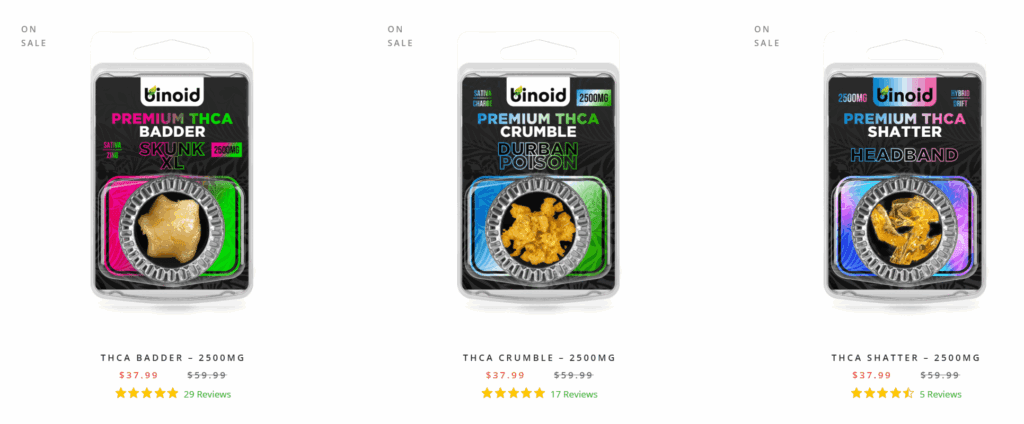
Contender #2: Concentrates
Making a powerful entrance as our second contender is the world of concentrates, a category that represents the pinnacle of cannabis extraction technology and the pursuit of ultimate purity and potency. Concentrates, in their many forms, are the refined essence of the cannabis plant, the result of processes that strip away all the extraneous plant matter to isolate the most desirable compounds: the cannabinoids and terpenes. This category is not for the faint of heart; it is the domain of the connoisseur, the flavor-chaser, and the experienced user seeking an effect that is both profound and immediate.
From shimmering, glass-like shatter and creamy, flavorful badder to pure, crystalline diamonds, the variety within the world of concentrates is vast and fascinating. Each type offers a unique texture, a distinct consumption experience, and a slightly different expression of the source plant’s profile. Concentrates are defined by their intensity, delivering a powerful, clean, and terpene-forward experience that is unmatched in its efficiency and strength, appealing to those who wish to experience the cannabis plant in its most potent and unadulterated form.
To start, cannabinoids are the naturally occurring chemical compounds within the hemp plant that are responsible for its wide array of effects. They achieve this by interacting with the human body’s endocannabinoid system (ECS), a complex network of receptors that helps regulate various physiological processes. The world of concentrates is built upon isolating these powerful molecules. Modern extraction technologies allow producers to not only pull these compounds from the plant but also to isolate specific ones and even convert them into other, rarer cannabinoids.
This scientific manipulation has created an incredible toolbox for formulators, allowing them to create concentrates with highly specific and targeted effect profiles. The cannabinoids most commonly found in today’s concentrates can be broadly grouped by their general psychoactive potency:
Non-Intoxicating: This group includes cannabinoids that do not produce the euphoric or “high” feeling associated with THC. Cannabidiol (CBD) is the most well-known, celebrated for its potential to promote a sense of calm and well-being. Cannabinol (CBN) is often found in concentrates designed for relaxation, while Cannabigerol (CBG) is valued for its unique properties as the “mother” cannabinoid from which others are formed.
Mild Potency: This category is perfect for those seeking a more functional and less intense psychoactive experience. Delta 10 THC is a prime example, known for delivering a clear-headed, uplifting, and energizing effect that is often compared to a Sativa strain, making it a popular choice for daytime use when focus and creativity are desired.
Moderate Potency: This group contains the most well-known and traditionally sought-after cannabinoids. Delta 9 THC is the benchmark for classic psychoactive effects. Delta 8 THC offers a milder, more body-focused version of that experience. THCA is the star player in many “raw” concentrates like diamonds and live resins, as it remains non-intoxicating until it is heated during consumption, at which point it converts into potent Delta 9 THC.
Strong Potency: Representing the cutting edge of cannabinoid science, this group features compounds known for their exceptionally high potency, intended for experienced users. THC-P (Tetrahydrocannabiphorol) has a much stronger binding affinity for the body’s receptors than Delta 9 THC, making it many times more potent. HHC (Hexahydrocannabinol) is a hydrogenated form of THC, known for its chemical stability and Delta 9 THC-like effects. These cannabinoids deliver a powerful and profound level of euphoria.
Just as with flower, the concepts of Indica, Sativa, and Hybrid are absolutely fundamental to the world of concentrates, serving as the primary guideposts for consumers to anticipate the character of a product’s effects. However, the way a strain’s profile is expressed in a concentrate is even more pronounced and pure than in flower. The extraction process, by removing all the plant material, eliminates the flavors of combustion like burning leaves and chlorophyll, allowing the strain’s unique terpene profile to shine through with unparalleled clarity. Whether a concentrate is made from the following will dictate its core identity, from its specific aroma and taste to the very nature of the experience it provides, be it deeply relaxing, creatively stimulating, or a harmonious balance of both:
Indica: Concentrates extracted from Indica-dominant strains are prized for their ability to deliver profound feelings of physical relaxation, tranquility, and serene bliss. The extraction process captures and concentrates terpenes like myrcene, linalool, and beta-caryophyllene, which are associated with calming and soothing effects. An Indica-based concentrate, such as a rosin pressed from an Ice Cream Cake strain, will offer a pure expression of that strain’s earthy, sweet, and relaxing qualities, making it an ideal choice for unwinding in the evening or settling into a state of deep, chilled-out comfort.
Sativa: Sativa-dominant concentrate are the go-to choice for users seeking an energizing, uplifting, and cerebrally-focused experience. The extraction process preserves and amplifies the bright, zesty terpenes like limonene and pinene, which are associated with mood elevation and alertness. A Sativa-based concentrate, such as a live resin extracted from a Sour Diesel strain, will provide a powerful and pure taste of citrus and fuel, accompanied by a wave of euphoric and creative energy. These concentrates are perfect for daytime use, artistic endeavors, or social situations.
Hybrid: Hybrid concentrates offer the best of both worlds, capturing the most desirable traits from their blended Indica and Sativa parentage. The resulting experience can be incredibly nuanced and multi-faceted, providing a balanced effect that can be enjoyed at any time of day. A Hybrid concentrate, such as a badder made from the GSC strain, can deliver a powerful initial wave of cerebral euphoria followed by a comfortable and relaxing body sensation. This versatility and the wide spectrum of possible effects make hybrids the most popular and diverse category in the world of concentrates.
Recommended products
So, at their most fundamental level, hemp/cannabis concentrates are exactly what their name implies: products in which the most desirable parts of the cannabis plant—the cannabinoids and terpenes—have been concentrated into a much smaller, more potent form. This is achieved through a variety of extraction processes that are designed to separate the resinous trichome glands from the less desirable plant material, such as leaves, stems, and stalks. The result is a product that can have a cannabinoid content ranging from 60% to over 99%, compared to the 15-30% range typically found in high-quality flower. This process of purification and amplification is the defining characteristic of all concentrates.
The methods used to achieve this separation fall into two main categories: solvent-based extraction and solventless extraction. Solvent-based methods use a chemical like butane, propane, or CO2 to dissolve the trichomes off the plant, while solventless methods use mechanical forces like heat, pressure, or agitation in ice water. This distinction is one of the most important factors in determining the final product’s character and purity.
The world of concentrates is a dazzling and often confusing landscape of different names, textures, and consistencies. While the variety can seem overwhelming, these differences are primarily the result of the specific extraction method used and the post-extraction techniques applied to the final product. Understanding these key types is the first step to becoming a knowledgeable concentrate consumer. It is also important to note that the term “Dabs” is not a specific type of concentrate itself, but rather a colloquial term for any concentrate that is consumed via a process called “dabbing,” which involves vaporizing the product on a hot surface:
Resin: This is a broad term for the sticky substance produced in the plant’s trichomes. In the context of concentrates, “resin” typically refers to a hydrocarbon extract made from dried and cured cannabis flower. It is a cost-effective and common type of concentrate, but it can sometimes lack the vibrant terpene profile of extracts made from fresh material. A more desirable form is Live Resin, which is made from plant material that was flash-frozen immediately at harvest, preserving a much wider and more authentic spectrum of terpenes, resulting in a significantly more flavorful and aromatic product.
Rosin: One of the most popular forms of solventless extract, it’s created by taking cannabis flower, kief, or hash and subjecting it to immense heat and pressure using a specialized rosin press. This simple mechanical process squeezes the resinous sap directly from the plant material without the use of any chemicals, resulting in an incredibly pure and clean final product. Similar to resin, Live Rosin is considered the premium version, created by pressing bubble hash that was made from fresh-frozen plant material, yielding the most flavorful and potent solventless experience possible.
Bubble Hash: Also known as ice water hash, this is another premier solventless concentrate. It is made by agitating cannabis plant material in a vessel of ice-cold water. The freezing temperatures cause the brittle trichome heads to snap off and separate from the plant. This trichome-rich water is then poured through a series of filtered bags with progressively finer mesh screens, which catch the trichomes while allowing the water and plant matter to pass through. The final product is a potent, sand-like concentrate that can be pressed into rosin or consumed as is.
Wax: A general term for opaque, soft concentrates that are not translucent like shatter. This consistency is achieved by whipping the extract during the purging process, which incorporates air and results in a cloudy, wax-like texture. Wax is a category that contains several more specific consistencies:
Shatter: This is one of the most iconic forms of concentrate, known for its brittle, glass-like consistency. It is typically translucent and amber or gold in color. Shatter is made using a solvent-based extraction method, and the key to its texture is that it is left undisturbed during the final purging process. While visually appealing, its hard texture can sometimes make it difficult to handle, as it can shatter into small pieces when portioned out.
Badder / Budder: These concentrates have a much softer, more malleable consistency, similar to cake batter, thick frosting, or butter. This texture is achieved by whipping the extract at a specific temperature during the purging process. The result is an opaque, creamy concentrate that is very easy to scoop and handle with a dab tool, making it one of the most popular and user-friendly consistencies on the market.
Crumble: A drier, more brittle version of wax. It has a honeycomb-like or crumbly texture that easily breaks apart. This consistency is achieved by using lower temperatures and longer vacuum purging times, which removes more moisture and results in a less viscous, more solidified final product. While potent, its crumbly nature can sometimes make it a bit challenging to handle without it breaking into small pieces.
Diamonds: Often considered the “caviar” of concentrates, diamonds are crystalline structures of nearly pure, isolated THCA (or sometimes other cannabinoids like CBDA). The process involves using a solvent to create a supersaturated solution of cannabinoids, which, under specific conditions of temperature and pressure over a period of weeks, will cause the THCA to crystallize and form solid “diamonds.” These are incredibly potent but lack flavor on their own.
Crystalline: This is the purest form of a concentrate available, consisting of a single, isolated cannabinoid in its crystalline form. Products like THCA Crystalline or CBD Isolate are fine white powders that can reach over 99.9% purity. While they offer the highest potency of a single molecule, they contain no terpenes and therefore lack any flavor, aroma, or the synergistic benefits of the entourage effect. They are often used as a base ingredient to add potency to other products.
The legal status of hemp-derived concentrates in the United States is governed by the same federal law that applies to THCA flower: the 2018 Farm Bill. This legislation legalized hemp and its derivatives, defining them as any product sourced from the Cannabis sativa L. plant that contains a Delta 9 THC concentration of not more than 0.3% by dry weight. This has created a legal pathway for the production and sale of a wide variety of concentrates, especially those that are high in THCA or alternative cannabinoids like Delta 8 THC and HHC. As long as the source material is compliant hemp and the final product’s Delta 9 THC level remains below the 0.3% threshold, these concentrates are considered federally legal. For a product like THCA diamonds, which is over 99% pure THCA with almost no Delta 9 THC, this is a straightforward issue of compliance.
However, the application of the “dry weight basis” rule to a viscous, non-dry product like an oil or wax is a subject of legal ambiguity and varying interpretation. Furthermore, the legal landscape is significantly complicated by a patchwork of state-level laws. In response to the rise of intoxicating hemp products, many states have enacted their own, more restrictive regulations. Some states have banned specific cannabinoids like Delta 8 THC outright, while others have adopted a “total THC” standard, which would make high-THCA concentrates illegal within their borders. This creates a confusing and inconsistent legal environment where a product may be legal at the federal level but illegal in a specific state. Therefore, it is absolutely essential for consumers to thoroughly research and understand the laws in their own state before purchasing or possessing any hemp-derived concentrates.
The overall effects of consuming concentrates are defined by their incredible potency and rapid onset. When a concentrate is dabbed or vaporized, the user is inhaling a vapor that is almost entirely composed of active cannabinoids and terpenes. This leads to an extremely efficient delivery to the bloodstream and brain, with effects that are felt almost instantaneously and with a profound intensity that flower simply cannot match. The experience is often described as being very “clean” and direct, as there is no combustion of plant material to muddy the effects. The “high” from a concentrate can be intensely euphoric and powerful, and the character of that high is very clearly defined by the strain’s terpene profile.
A dab of Sativa live resin, for example, can produce a sharp, electrifying burst of creative energy, while a dab of Indica live rosin can feel like being wrapped in a warm, heavy blanket of relaxation. Due to the high potency, the effects can be overwhelming for novice users, and regular consumption can lead to a rapid increase in tolerance. For experienced users, however, concentrates offer an unparalleled level of efficiency and a powerful, flavorful journey into the heart of the cannabis experience.
Pros & Cons
The world of concentrates offers a compelling proposition of potency and purity, presenting a unique set of advantages that appeal to many experienced cannabis users. However, this high-octane experience also comes with its own set of drawbacks and a steeper learning curve. A balanced examination of the pros and cons is essential to determine if this advanced category of products is the right fit for you.
Pros:
Unmatched Potency and Efficiency: The most significant advantage of concentrates is their sheer potency. With cannabinoid concentrations often exceeding 70-90%, they offer an incredibly powerful experience from a very small amount of product. This efficiency is ideal for experienced users or those with a high tolerance who need a strong effect to find their desired level of bliss. A single dab can provide an effect that might take an entire bowl or joint of flower to achieve.
Pure, Intense Flavor Profiles: High-quality concentrates, particularly live resin and live rosin, are celebrated for their exceptional flavor. Because all the extraneous plant matter has been removed, what remains is a pure expression of the strain’s terpenes. This results in an incredibly clean, intense, and nuanced flavor profile that is unadulterated by the taste of burning leaves, offering a “high-definition” taste experience for connoisseurs.
Rapid, Powerful Onset of Effects: Dabbing or vaporizing a concentrate delivers a highly concentrated dose of cannabinoids to the lungs for near-instantaneous absorption into the bloodstream. The onset of effects is incredibly rapid and powerful, making it a very effective method for users who desire an immediate and profound experience. This speed can be highly desirable for those seeking a quick transition into a state of euphoric relaxation.
A “Cleaner” Inhalation Experience: When vaporized correctly at the right temperature, concentrates do not combust. This means the user is inhaling a pure vapor of cannabinoids and terpenes, without the tar, carcinogens, and other irritants that are created when plant material is burned. For many health-conscious users, this is a major advantage over smoking flower, as it is significantly less harsh on the respiratory system.
Cost-Effective for High-Tolerance Users: While the initial price per gram of a concentrate is higher than flower, its extreme potency can make it more economical for heavy users over the long term. Because such a small amount is needed to achieve the desired effect, a single gram of concentrate can last much longer than a gram of flower for someone with a high tolerance. This can lead to a lower overall cost per session.
Discreet Odor: While dabbing is not entirely odorless, the vapor produced has a much lighter, less pungent aroma than the smoke from flower. The smell is primarily that of the terpenes, which is often aromatic and pleasant, and it dissipates very quickly without clinging to fabrics or permeating a room in the same way that smoke does. This makes it a more discreet option for home use.
Versatility in Consumption: While dabbing is the most common method, concentrates can be very versatile. They can be loaded into specialized vape pens or “dab pens” for portable use, they can be added to the top of a bowl of flower to significantly increase its potency (a “twaxed” bowl), or they can even be used in edibles after being decarboxylated. This flexibility allows users to enjoy them in various ways.
Long Shelf Life: Due to their low amount of organic plant matter and high concentration of stable cannabinoids, concentrates are very stable products. When stored properly in an airtight, light-proof container in a cool place, they can maintain their potency and flavor for a very long time, much longer than flower, which can dry out and lose its aroma over time.
Precise Expression of Strain Genetics: Concentrates, especially those made from a single source, can offer a very precise and powerful representation of a particular strain’s characteristics. The high concentration of terpenes provides a clear and unambiguous expression of the strain’s aroma and flavor profile, allowing users to deeply explore the unique nuances of different cannabis genetics.
The Ritual and Craft for Hobbyists: For some, the process of dabbing itself becomes a hobby and a ritual. Learning the intricacies of heating the nail, handling the different consistencies of concentrates, and collecting different glass rigs and accessories can be a deeply engaging and enjoyable part of the experience. It appeals to the tinkerer and the connoisseur who enjoys the craft and precision of the process.
Cons:
Overwhelming Potency for Beginners: The extreme potency of concentrates is a double-edged sword. For novice users or those with a low tolerance, a single dab can be intensely overwhelming, leading to a very uncomfortable and unpleasant experience. The power of concentrates should be respected, and they are generally not recommended for people who are new to cannabinoids.
High Barrier to Entry (Equipment and Cost): To properly consume most concentrates, a significant investment in specialized equipment is required. A basic dab rig setup, including the rig, a quartz banger, a carb cap, a dab tool, and a butane torch, can be expensive and intimidating. This high barrier to entry can make it inaccessible for casual or curious users.
Steep Learning Curve: Dabbing is a more complex process than simply lighting a bowl. There is a learning curve to figuring out the correct temperature to heat the nail (too hot and you burn the terpenes, too cool and you waste the concentrate), how to handle the sticky material, and how to operate the rig correctly. This process can be daunting and potentially dangerous (due to the use of a torch) for the uninitiated.
Potential for Rapid Tolerance Increase: Due to the highly concentrated doses of cannabinoids being consumed, regular use of concentrates can lead to a very rapid increase in a user’s tolerance. This means that over time, they will need to consume more and more to achieve the same effects. This can make it difficult to feel the effects of lower-potency products like flower and can lead to increased consumption costs.
How to Go About Choosing Which Option
Navigating the choice between the familiar comfort of THCA flower and the potent precision of concentrates is a journey of self-discovery, guided by personal preference, lifestyle, and experience level. There is no single “better” product, only the one that aligns most harmoniously with your individual needs and intentions. To make an informed decision, it is crucial to conduct an honest self-assessment. Consider your tolerance and experience: are you new to the world of cannabinoids, or are you a seasoned user seeking a more powerful effect? Think about your budget and willingness to invest in new equipment. Reflect on what you value most in the experience: is it the holistic, sensory ritual of handling the plant, or the clean, efficient, and intense experience of its purified essence?
To further simplify the decision-making process, consider the following key factors:
Potency and Tolerance: This is the most critical factor. If you are a beginner or have a low tolerance, THCA flower is the much safer and more forgiving starting point. Concentrates are best reserved for experienced users who understand their tolerance and are specifically seeking a high-potency experience.
Budget and Equipment: Flower can be consumed with simple, inexpensive accessories like a small pipe or rolling papers. Concentrates, especially for dabbing, require a significant upfront investment in a rig, torch, and tools. Consider whether you are prepared to make that investment.
The Desired Ritual: Do you enjoy the hands-on process of grinding flower, packing a bowl, and the entire sensory experience that comes with it? Or do you prefer a more modern, scientific, and precise ritual that focuses on efficiency and purity? The former points to flower, the latter to concentrates.
Flavor Profile: Are you seeking the complex, earthy, and robust flavor of the entire plant, including the subtle notes from the combustion process? Or do you desire the ultra-clean, pure expression of a strain’s terpenes without any competing tastes? Flower provides the “full plant” flavor, while concentrates offer “pure terpene” flavor.
Convenience and Discretion: For quick, simple sessions, flower is often more convenient as it requires less setup than a full dab rig. However, the vapor from concentrates is generally less odorous and dissipates faster than smoke, offering a slight advantage in discretion.
|
Feature |
THCA Flower |
Concentrates |
|---|---|---|
|
Primary Appeal |
Authenticity & Ritual |
Potency & Purity |
|
Potency Level |
Moderate to High (15-30% THCA) |
Very High to Extreme (60-99%+ Cannabinoids) |
|
Best For… |
Beginners to Experts |
Experienced Users Only |
|
Equipment Needed |
Simple (Pipe, Papers, etc.) |
Complex (Dab Rig, Torch, etc.) |
|
Upfront Cost |
Low |
High |
|
Long-Term Cost |
Economical in Bulk |
Can Be Economical Due to Efficiency |
|
Flavor Profile |
Full-Plant, Earthy, Complex |
Pure Terpenes, Clean, Intense |
|
The Ritual |
Hands-On, Traditional, Sensory |
Scientific, Precise, Modern |
|
Learning Curve |
Very Low |
Very High |
|
Tolerance Impact |
Gradual Increase |
Rapid Increase |
The Alchemist’s Table: Choosing Your Essence
The choice between the verdant fields of THCA flower and the gleaming world of concentrates is not merely a practical decision; it is a reflection of the experience one seeks to cultivate. It is the choice between the full symphony of the plant as nature composed it, and its most powerful, distilled, and resonant solo note. One path offers the comfort of a timeless tradition, a connection to the soil and the rich history of the plant itself. The other offers a glimpse into the future, a journey into the very heart of the plant’s molecular structure, guided by the precise hand of science.
Ultimately, neither path is superior. The true art lies in understanding your own desires, respecting your limits, and choosing the form that will best allow you to explore the vast and wonderful landscape of personal bliss.

